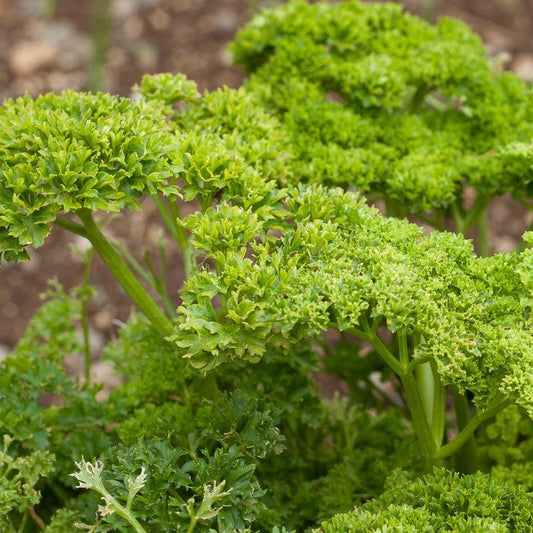Introduction
This leafy herb does more than garnish—grow it right and you’ll have harvests from summer through early fall.
Parsley is one of the most rewarding herbs to grow. Parsley thrives in full sun with well-drained soil. It’s a staple that adds flavor and beauty to your garden—and your recipes!
If you’ve ever sprinkled fresh parsley over chimichurri, tossed it into a soup pot, or whipped up a quick pesto, you know just how much flavor this little leaf can bring. But growing parsley with certified organic seeds isn't just about taste. It’s also about cultivating wellness, stewarding the earth, and making the most of your harvests—season after season.
Why Parsley Belongs in Every Garden
Flat-leaf or curly, parsley offers more than just garnish appeal. It’s a powerful, nutrient-dense herb that’s surprisingly easy to grow. With certified organic seed options, you can ensure that what you’re planting supports pollinators, local ecosystems, and your health.
The real beauty of parsley? It keeps giving. With consistent harvesting—snipping from the outer stems and leaving the inner crown intact—you can enjoy fresh bunches from summer well into the fall. It’s a perfect end-of-season crop that pairs with nearly everything: soups, marinades, sauces, or a bright herbaceous salad.
And unlike more delicate herbs, parsley stands up well to preservation. Freeze it in olive oil cubes, dry it for winter meals, or chop and store for immediate use.
Harvesting Parsley Like a Pro
To keep your parsley growing strong:
- Begin harvesting once the plant has several mature leaves.
- Always cut from the outside first, allowing the center to continue producing new growth.
- For a robust late-summer harvest, water consistently and trim often to prevent bolting.
According to our herb experts, parsley (like cilantro and chives) is best preserved by freezing, not drying. This helps maintain its vibrant flavor and color for longer. Pro tip: freeze chopped parsley in olive oil or lemon juice using an ice cube tray, then toss into sautés, stews, or sauces as needed.

Organic, Accessible, and Seasonally Smart
At Grow Organic, we believe your herb garden can do more than flavor your food—it can contribute to a more sustainable planet. That’s why all our parsley seed packs (and dozens of other culinary herbs) are certified organic and thoroughly vetted by our team.
We also offer free growing guides to walk you through the steps—whether you're growing in raised beds, patio pots, or rows alongside your vegetables. You’ll find tips on soil prep, sunlight needs, watering strategies, and common problems to avoid.
When you grow parsley organically, you’re saying yes to pollinator health, clean water, and a toxin-free backyard. You’re saying yes to seasonal flavor—and to the joy of harvesting something real, fresh, and nourishing. For more inspiration, browse our organic gardening blog.
Conclusion
Growing parsley organically is more than a simple gardening project—it’s an invitation to connect with nature, savor fresh flavors, and cultivate sustainability right at home. From its vibrant leaves to its steady regrowth, parsley rewards a little care with generous harvests and endless culinary potential. Whether you’re tending a backyard plot or a sunny windowsill container, this humble herb will enrich your kitchen and your garden alike.
So, plant a few seeds, nurture them with sunlight and care, and enjoy the simple satisfaction of harvesting your own organic parsley—one flavorful, earth-friendly bunch at a time.




